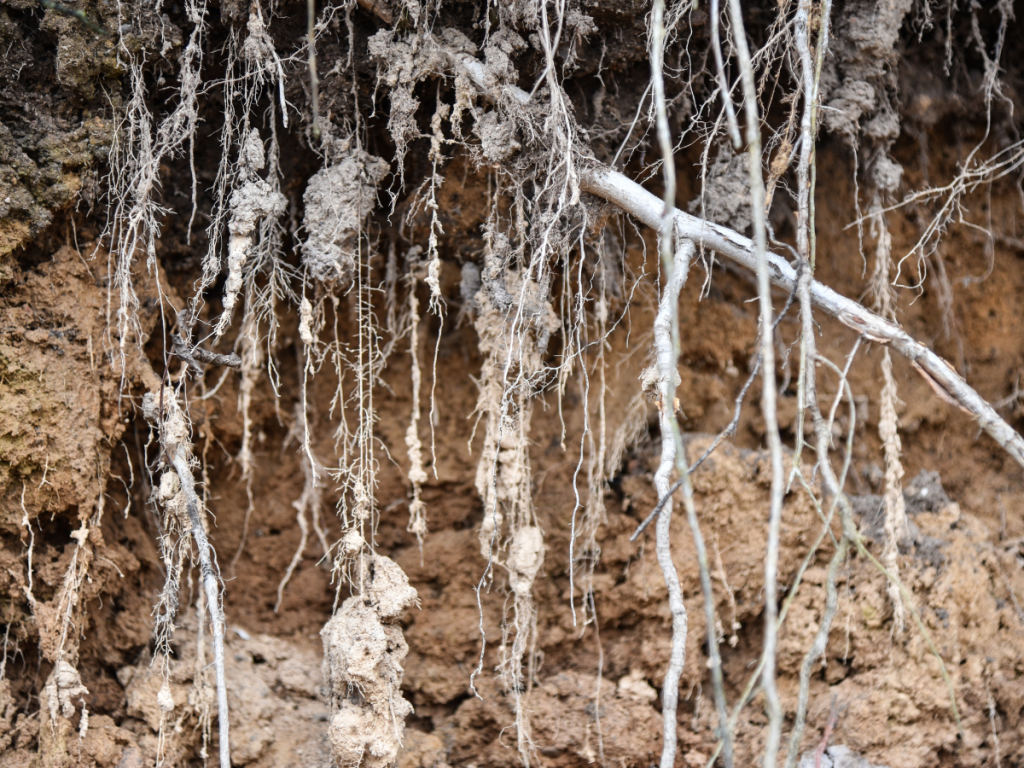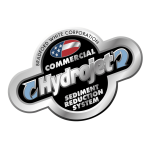Trees are great for properties as they provide an excellent source of shade and privacy. However, tree roots can pose a danger when it comes to underground pipes and sewage lines.
Discovering tree roots in a sewer line is a nightmare for homeowners, as they can grow into the pipes and create blockages, leaks, and damage. Tree roots will often grow toward the moisture and nutrients in the sewer line and can even penetrate small cracks or gaps in the pipework.
If left unfixed, tree roots can cause serious issues such as sinkholes, backups, slow drains, leaking pipes, and foul odors.
Fortunately, there are ways to prevent and remove tree roots in sewer lines. We’ve created a list of our top five ways to handle tree roots.
1. Use rock salt
Rock salt is one of the simplest and cheapest methods to kill tree roots in your sewer line. As a natural herbicide it dehydrates and kills roots fairly quickly.
How to use it:
- Pour about a cup of rock salt into your toilet or sink and flush it with water.
- Repeat this process every month or so to keep the roots from growing back.
Drawbacks
This method does have its cons, however. The first is that it may take a long time for rock salt to reach and affect the roots, especially if they are deep or far from your drain.
Secondly, rock salt can corrode your pipes over time if they are made of metal. Thirdly, rock salt can harm the environment by increasing the salinity of the soil and water around your sewer line.
2. Foaming root-killer
Foaming root-killer products offer another effective means of clearing tree roots from sewer lines. These products use chemicals that dissolve and dislodge roots from pipes while also acting as a protective shield to stop new ones from emerging.
Follow the directions outlined on the product label and pour a dose into your toilet or drain, following its directions exactly. The foam will expand and fill your pipes, reaching and killing any roots it comes into contact with.
Drawbacks
Rock salt can be more effective, working faster and deeper into pipes, but liquid detergent has its own set of drawbacks: the cost will depend on the products you choose and how much you use it.
Second, using or disposing of these products incorrectly could pose significant health and environmental risks. And thirdly, it may not remove all roots or prevent their regrowth completely.
3. Copper sulfate
Copper sulfate is a chemical compound that can poison and kill your roots plumbing issues. You can purchase copper sulfate in either crystal or powder form.
How to use it:
- Dissolve half a cup of copper sulfate in a bucket of water and pour it down your toilet or drain.
- Repeat every month to ensure the roots don’t grow back.
Drawbacks
Copper sulfate is more powerful than both rock salt and foaming root-killer as it can kill even large, stubborn roots. However, it also has some drawbacks. It can be very toxic to humans, animals, and plants if ingested or exposed to skin or eyes.
Copper sulfate can also damage your pipes if used too frequently or in large quantities. Lastly, leaching could potentially contaminate your soil and water sources.
4. Remove the roots manually
If none of the above methods work or if you have a severe case of plant roots in your sewer line, you may need to inspect, remove, and repair the damage manually.
We strongly recommend leaving this type of work to trained professionals, like the ones here at Plumb-Tech, as it can become a complex job.
How it’s done:
- The professionals will inspect your plumbing for any roots in the sewer line. Either a camera or plumbing snake will show you where the problem is in your pipes.
- To remove the roots manually, the plumbing technician will use an auger or a hydro jet that cuts or blasts the roots from the pipes.
To fix any damage, it may be necessary to upgrade or re-line your pipes with more durable materials that are resistant to root intrusion. Your plumber can suggest which material would best serve as a repair or replacement option.
Drawbacks
Chemical treatments may provide temporary fixes; however, this method offers a more permanent solution that will prevent issues in the future. Unfortunately, there can still be drawbacks to this method – depending on how extensive or complex your damage may be, this process could become expensive and time-consuming.
It may also require digging up your yard or street to access the root intrusion, which can disrupt your landscape and local traffic. You may need a permit or approval from your local authorities before you start any work.
5. Hire a professional
If you’re uncomfortable performing any of the methods suggested above on your own, or you want a safe and effective solution, consider hiring a plumber or sewer contractor to remove tree roots from your sewer line.
An experienced plumber can evaluate your situation and suggest the ideal course of action, whether using either chemicals, a manual method, or a combination of both solutions.
Plumbers will have all of the appropriate tools, equipment, and expertise, as well as follow all applicable safety and environmental regulations. Professional services can save time, money, and hassle in the long run by guaranteeing quality results that last.
How to prevent tree roots from growing in your sewer pipes
Tree roots in sewer lines can become a serious and costly issue if not addressed. The best way to deal with it is to prevent them from growing into it in the first place.
Here are some tips on how to prevent tree roots in your sewer line:
- Plant trees away from your sewer line or choose trees that have shallow or noninvasive root systems.
- Install a root barrier around your sewer line that can physically or chemically block or deter roots from entering.
- Use less water in your home or install water-efficient fixtures and appliances that will reduce the amount of wastewater that enters your sewage pipes.
- Schedule regular maintenance inspections, cleanings and repairs to your sewer line.
By following these tips, you can protect your plumbing system and your property from potential damage and inconvenience.
If you need assistance with your plumbing, it’s best to call a professional plumber who can easily assess and address the issue for you. Have questions about tree roots or another plumbing issue? Contact Plumb-Tech today!





